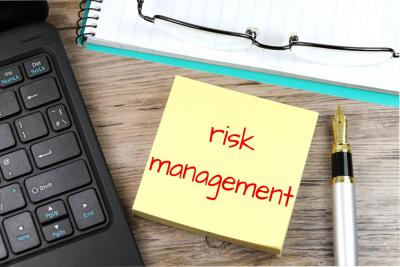
Old-fashioned technology doesn't just keep your business behind. It exposes you to cybersecurity threats and can damage productivity, efficiency, and business revenue. The COVID-19 epidemic has highlighted the need to update and fix our existing tech systems, including remote work models. Companies were not ready to transition to a well-transitioned distributed workforce.
Also read:
Business Technology Management
Evaluation of Technologies Suitable for Commercialization
Technology Empowerment for Organizations
Leadership teams are now fully engaged in planning some much-needed technological changes and upgrades, including the adoption of cloud, artificial intelligence, and machine learning capabilities.
Here are eleven techniques and upgrades that can help you run your business more securely, quickly, or efficiently without breaking the bank.
1. Invest in security
The UK's 2018 survey found that 43% of businesses and 19% of charities reported cybersecurity violations in the last 12 months.
These statistics highlight the importance of cybersecurity for businesses. Learn how to protect your business online, assess IT risk, or develop an effective IT risk management process.
2. Improve search time
The key to online success is search engine optimization. The more you rank in the search results, the more you will appear. This means more visitors and potential customers to your site. If you don't have one yet, you should improve your website and search engine content.
3. Upgrade your POS system
The POS or Point of Sale system has been around for a long time, but there have been some recent changes. For example, billing systems based on the latest Wi-Fi now come in a single device rather than a hardware collection. Web-based POS systems are also booming. Read more about using a payment card for your business, or - if you have concerns about keeping your POS system secure - visit Point of Sale of Terminal Security.
4. Update outdated software and hardware
The key to preventing attacks in times of crisis is to make sure you have the tools you need to protect yourself - including updating outdated software. As the software evolved, so did the security arrangements. Some older software cannot save your data from threats. In addition to replacing software, older hardware should also be replaced.
5. Focus on quality and learning
Leaders need to emphasize productivity and a culture of continuous learning. Your team needs to perform as effectively as possible because the stakes are higher than ever. However, productivity gains come from making adjustments to your process. Learning from past events enables your team to do better and can even prevent future occurrences.
6. Invest in tools that keep the system running
IT teams are equipped with alerts and support tickets, and service usage is high at all times. Leaders can help reduce this chaos with AI and ML-powered tools that help maintain and operate IT systems while putting pressure on IT operations teams. Users have long-lasting memories, and they will remember when they were down and which services helped them and which services fired them.
7. Prefer email security
Significant shifts in remote work have made email the most important means of communication for many companies. It highlights the need to protect email and sensitive information, including human error and new hacker threats. Companies should upgrade email security and add tools that use state-of-the-art technology to secure communication between employees, consumers, and suppliers.
8. Accelerate the adoption of your cloud
The crisis has affected companies focusing on and identifying cost savings. The consequence of this is that the cloud must be adopted. Companies operating in on-premises and cloud environments will find that they need to accelerate migration to the cloud to save agility and cost due to a lack of technical capabilities.
9. Proof of your BCP future with service and mobile IT as software
From a technology standpoint, the event underscores the need for future business continuity plans with SaaS-based and mobile technology, more than anything else that allows organizations to deploy their workforce from the office seamlessly. It's good to have this kind of flexibility at any time, but it's essential at times like this.
10. Use multi-factor authentication
The current crisis highlights the need to give your staff and third-party users access to these systems when they can be secure enough to deter attackers from operating remotely. Multi-factor authentication (MFA) - especially on all privileged accounts and critical business systems - is essential to protect your enterprise from unauthorized access due to stolen credentials.
11. Be more synchronized with low code platforms
In recent weeks, technical guides have been developing strategies to address the challenges posed by COVID-19. Businesses need to change the process quickly. One of the latest upgrades they may have now is a low-code platform that allows lightning to implement rapid changes. When automating business ideas is just a matter of minutes, organizations are better equipped to respond to uncertainties.
More to read: Quality Management
Benefits of Upgrading your Business
- Your old devices and software may quickly wear out over time. Technology eventually becomes obsolete, and you may need to upgrade only because of your devices' age. Investing in new technology can help your computer run more efficiently and reliably, which can increase your productivity.
- Increases performance, making the overall computer run faster and more efficiently.
- It is necessary to upgrade the computer to meet the needs of a program or game system.
- Better, more efficient preparation techniques
- Less waste
- More efficient stock management and ordering system
- Ability to develop new, innovative perspectives
- More efficient marketing and promotion
- New ways to sell



